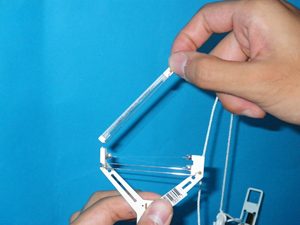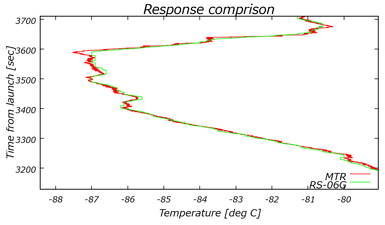
HYVIS, developed by Meisei in the 1980s (HYdorometer VIdeoSonde), has contributed to the development of cloud microphysics these days.However, it was unable to measure cloud in heavy rain because the structure collects ice particles and raindrops inside the sensor.
Recently, there arises increasing needs for a better understanding of microphysical processes occurring inside the cumulonimbus to clarify the extreme weather phenomena and validate data taken by other equipment such as satellite and radar.

Previous HYVIS had two problems. First, it freezes inside when it flies in heavy rain. Second, water accumulates into the front of the transparent film for camera. At the request of Prof. Nakakita of Disaster Prevention Research Institute, Kyoto University, Meisei have developed a new type HYVIS that can stably capture even in severe thunder cloud.

Meisei had to sort out conflicting demands that the water sensitive electronic equipment needs to actively collect water particles inside. The key was to discharge the collected water before it freezes from the optical particle device and electrical equipment.
Meisei have built a new facility that can simulate and reproduce the artificial precipitation in our air chamber. As a result of dozens of structual tests and experiments, Meisei developed new innovative structure, which can observe without any problem even in the typhoon.
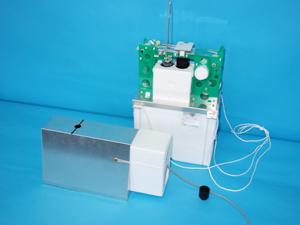
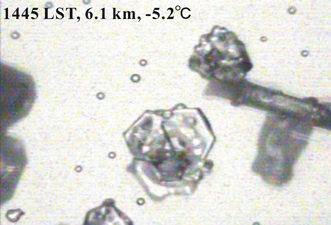
Acknowledgment : New HYVIS/Videosonde system is supported by Dr. Kenji Suzuki and Dr. Kazuhisa Tsuboki with the budget of Dr. Eiichi Nakakita's KAKENHI "Scientific and Integrated Research by In-situ Campaign Observations Synchronizing Video-sonde and the Latest Polarimetric Radar, Heading for Reduction of Water Related Disaster.

Global warming is of major global concern after the long-term monitoring of atmospheric carbon dioxide concentrations. The long-term global observations will allow the prediction of global warming feedback into the carbon balance and contribute to global warming prevention strategy decisions on what controls to implement on anthropogenic emissions.
However, the precious CO2 vertical profile was obtained only by highly-costing air-borne observation. Remote-sensing from satellite and/or surface monitoring only provide with column densities of CO2. In order to solve these problems, Meisei has developed a low-cost, easy-to-operate, all-weather sonde to measure the vertical CO2 distribution.

While the average concentration of Co2 is 400ppm in the atmosphere, about 1ppm accuracy is required for monitoring of global warming.
It is not so difficult to measure CO2 with the accuracy on the earth, but to achieve the same in the upper air where conditions are dramatically changing and extremely cold and dry is a big challenge.

Meisei conducted experiments using commercially available sensors, but no sensor existed with suitable stability for upper air sounding. So, with the support of JST, Meisei performed a joint development of the NDIR CO2 sensor system with Nagoya University and Kyoto University.
In order to follow the changes in atmospheric pressure and temperature, Meisei's CO2 sonde mounts two standard gases simultaneously. As the consequence, Meisei developed world's first practically workable CO2 sonde, which can measure at the accuracy of 1ppm up to 10km.
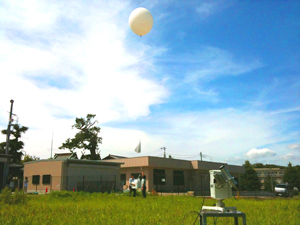
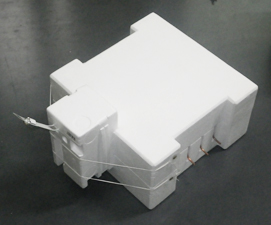
Acknowledgment : CO2 sonde system is received financial support from the Japan Science and Technology Agency (JST) titled 'Small measurement device for CO2 monitoring'.

The temperature sensor that can accurately measure the temperature up to the stratosphere is important to improve daily weather forecast and to detect the global and regional climate change, and thus, highly accurate and reliable temperature sonde is required.
However, actually, there remain significant differences among temperatures simultaneously measured by radiosondes from different manufacturers due probably to inaccurate radiation correction.

The temperature sensor still depends on empirically determined correction to compensate for the solar radiative heating without solving the problem, because accurate estimation of the bias is difficult. The temperature bias appears more remarkable in the stratosphere, where the time constant for the sensor to reach equilibrium with the environment becomes longer while the solar radiation is stronger.
Accurate sensors in stratosphere could be designed by choosing materials with large values of heat transfer coefficient and reducing the total radiative flux to the sensor.

To solve this challenge, Meisei have chosen the tungsten wire that was once used for the rocketsonde. It's response time estimated from the result of laboratory experiments is only 46 ms at 10 hPa, and as a result, the bias by solar radiation is estimated to be 0.5 K or less in daytime. In addition, the possible fine temperature structure that has not been discussed so far can be detected by 16 Hz high-speed sampling processing.
From the fine temperature structure, the origin of individual temperature perturbations, such as the heat pulse from package, radiation effect and the solar eclipse due to the overhead balloon, could be separately identified. Finally, we could understand what has happened to the temperature sensor in the stratosphere, and were able to get the hint of the next development.
